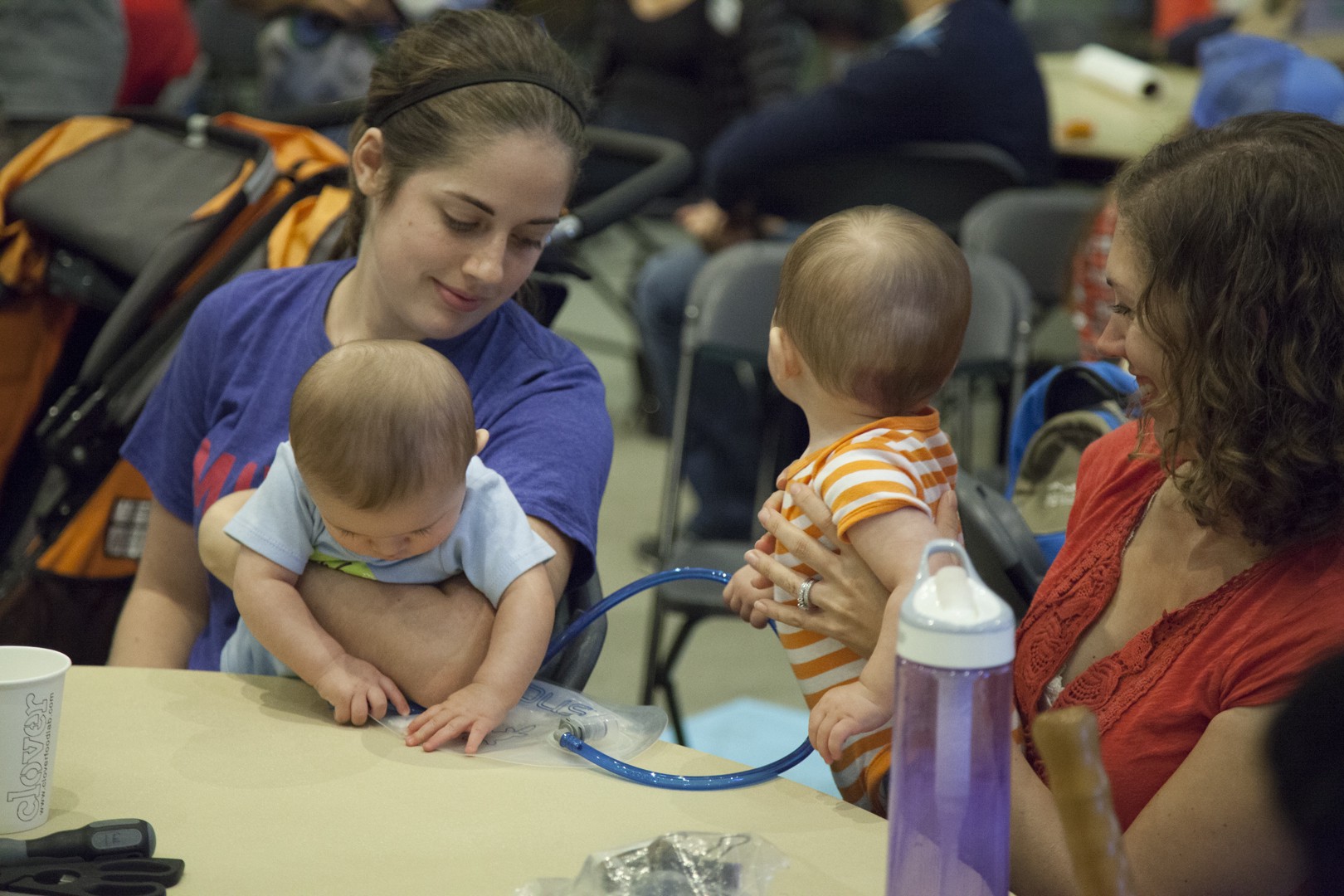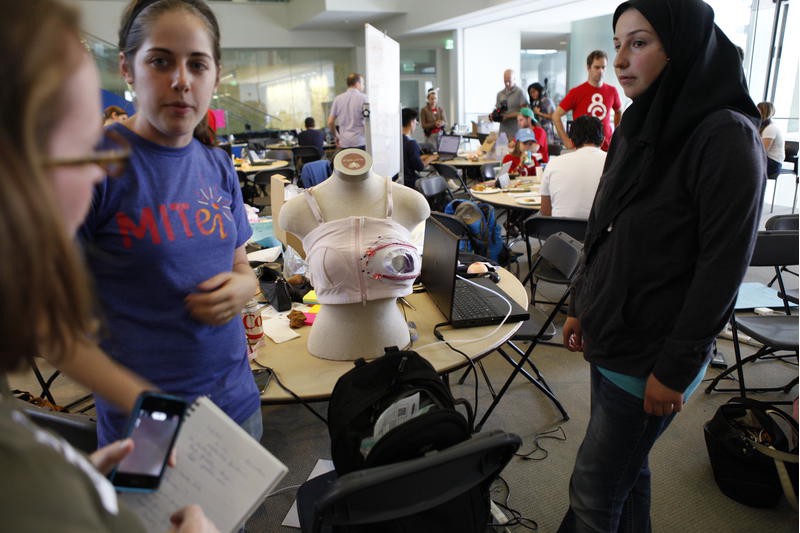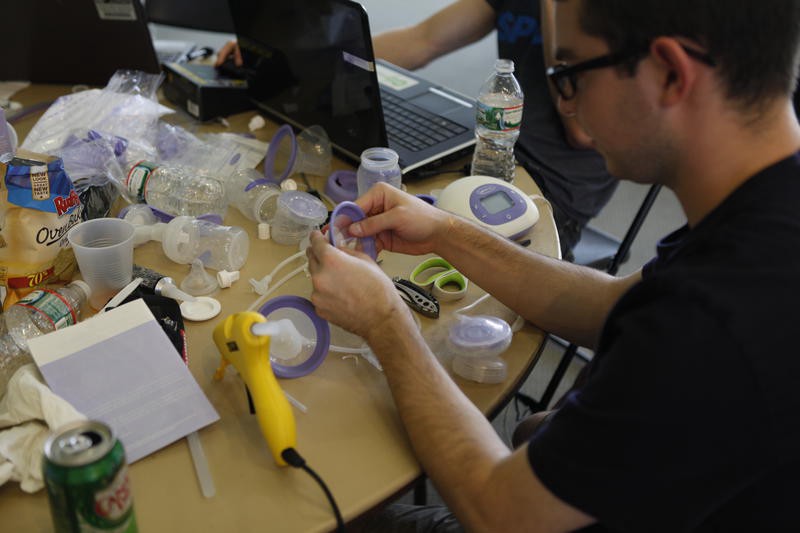

Tired of being a slave to the pump? Feel a bit like a cow when extracting your breast milk? It makes sense–and here’s why.
The idea behind breast pumps is simple: They help nursing mothers withdraw breast milk using vacuum and compression. However, their design hasn’t changed much since the development of the electric breast pump in 1956. Its designer, Einar Egnell, originally worked as an aviation engineer before convening with pediatricians, nurses, and mothers to develop the device. Much of his original work, though, was based around research on dairy cattle. And while there have been enormous advances in agricultural milking equipment, breast pump developments have been less forthcoming.
Enter long-overdue cause for the Make The Breast Pump Not Suck hackathon, held by the MIT Media Lab in September. At first glance, the event seemed much like business as usual: a group of designers, engineers, and medical professionals brought together for a short period of time to solve a shared problem using open source technologies; the hope that the designs might be taken up elsewhere; and a winning entry with tags that included “analog,” “LEDs,” “Arduino,” and “wearables.” The hackathon focused on a technology–the breast pump–overlooked by innovation in the wider medical sphere, encouraging designs which could potentially be fleshed up into fully fledged products and services. At its heart, though, it had wider ambitions of going beyond the “basic hacks” of a hackathon, pushing for wider change in maternal and family healthcare.

The idea for the event was seeded back earlier in the year, following the publication of an article on The New York Times parenting blog, which laid out just how miserable the breast-pumping experience is, asking why pumps weren’t as elegant as an iPhone, and as quiet as a Prius. Following a smaller event in May, over 150 people from various and overlapping backgrounds attended the hackathon, including parents, engineers, designers, and healthcare providers–all divided into mixed teams.
Issues around breast pumps are as much social as technological. Breastfeeding exists in a specific social context in which women can feel guilty or ashamed if they find breastfeeding difficult, adding extra pressure and stress to the use of pumps. There remains considerable stigma around breastfeeding in public, with women subject to stares, rude comments, or even being asked to leave some premises. Things aren’t much better in the workplace, with few employers providing the time, space, and refrigeration facilities needed to pump.
The design of the current pump was developed based on Egnell’s focus on the mechanics of breastfeeding, with less attention paid to the context in which it took place. As a result, breast pumps may be functional, but they’re not easy or pleasant to engage with. They are often expensive, the motor is loud, and they can be painful to use. Pumps are made up of lots of different parts which need to be kept together and sterilized; a hassle at the best of times, near impossible when one is trying to look after a small child. Women describe feeling embarrassed, awkward, and mechanical when they use the devices.
User-centered design practices have emerged as a way of approaching some of these issues, bringing together different parties to develop medical products and services focused on the lives of users. While the issues people experience are global (childbirth, breastfeeding), mothers around the world live their lives in different ways, with some having access to far more power and resources than others. Healthcare provision and regulation is also deeply localized.

This hackathon was a user-focused event, asking participants to ground their projects in an understanding of the lives of the women involved in breastfeeding. Rather than limiting input to those who had the time and resources to attend, organizers encouraged those who couldn’t make it to submit ideas and thoughts online, which were then collated into an open database for teams to review. Members of the public were also invited to give teams feedback, and hear the final pitches at the end of the weekend when projects were judged around inclusive and user-centered design principles.
Judging criteria included the questions: How well did this project listen to user input, look at user stories, design something for a real-world need? Was the team diverse and, if not, did they look for expertise they might be missing? Was the project accessible, or only an “innovation for the one percent?” The winning idea–the Mighty Mom utility belt–responded to user needs for a device that is hands-free, discreet, captured personal data, and can be used on the go. Other ideas included the Helping Hands bra, powered by an external motor and filled with soft beads to provide relief through massage and compression; and the Pump.IO, an open platform app.
Ultimately, the breast pump hackathon points to the challenges around designing maternal and reproductive healthcare, and the social and political meanings that tangle and inform them. While hack events are not substitutes for the time, money, and labor-intensive processes of industrial research and development, they can be a place to initiate conversations and public engagement, and begin to strip away secrecy and stigma around the technologies and ideas overlooked by established industries.


How We Get To Next was a magazine that explored the future of science, technology, and culture from 2014 to 2019. This article is part of our Vital Signs section, on the future of human health. Click the logo to read more.
